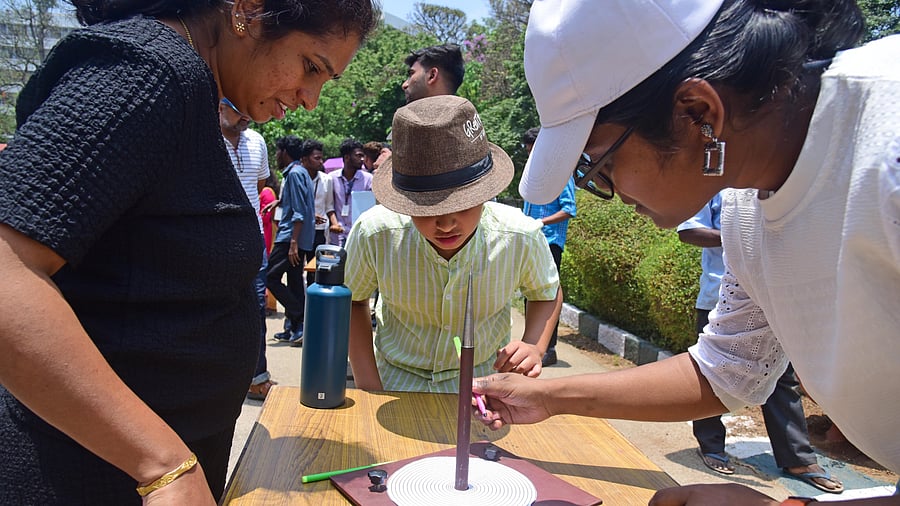
Children explore Zero Shadow Day with hands-on experiments at the Indian Institute of Astrophysics (IIA), Bengaluru, on Thursday.
Credit: DH Photo
Bengaluru: The Indian Institute of Astrophysics (IIA) organised a public event on Thursday to observe and celebrate Zero Shadow Day.
Students from across Bengaluru and a few from Chennai attended the event, where scientists explained the phenomenon behind this unique occurrence.
Niruj Mohan Ramanujam, Head of IIA’s Science Communication, Public Outreach and Education, explained that Zero Shadow Day occurs when the sun passes directly overhead at locations situated between the Tropic of Cancer and the Tropic of Capricorn.
“This happens once during Uttarayana (between December 21 and June 21) and once during Dakshinayana (between June 21 and December 21). In Bengaluru, and other places along the same latitude, the sun passes exactly overhead at noon on April 24 and August 18,” he said.
On this day, he added, the shadows of objects fall directly beneath them. “Hence, objects like poles will cast no visible shadow at local noon,” he noted.
Following a talk on the Zero Shadow Day phenomenon, visitors measured shadow lengths and observed the zero-shadow moments through demonstrations and hands-on experiments.
The Indian Institute of Astrophysics collaborated with the Aryabhat Foundation, Bhopal, whose team measured shadow lengths at Bengaluru’s local noon. Using these measurements, participants were guided to calculate the earth’s radius — achieving an impressive accuracy of around 0.1%.
Prof Annapurni Subramaniam, Director of the Indian Institute of Astrophysics, said that Zero Shadow Day occurs across Karnataka from March 20 in its southernmost parts to May 13 in the northernmost regions.